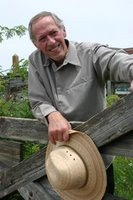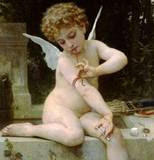Collecting
 My co-author asked me the other day if I collected anything. Thinking of an old roommate who collected thousands of key chains, my boss’s daughter who collected all the Beanie Babies ever manufactured, and my brother’s TVGuide collection (the original size not today’s version), I immediately answered, “No.”
My co-author asked me the other day if I collected anything. Thinking of an old roommate who collected thousands of key chains, my boss’s daughter who collected all the Beanie Babies ever manufactured, and my brother’s TVGuide collection (the original size not today’s version), I immediately answered, “No.”
My dozen or so porcelain dolls don’t qualify me as even a “novice” collector. My hundreds of books (okay, it might really be thousands of books but if I don’t acknowledge the number I don’t have to figure out how much money I’ve got invested in paper and words) might qualify.
I’m not sure total numbers is the key to collecting anyway. There has to be a certain intent to collect for collecting’s sake. I buy books to read them. I don’t buy “first editions.” I don’t focus on just one or two genres of books. I mix paperbacks with hardbacks. I don’t have my books catalogued and properly displayed. So … I’m probably not a book collector.
Movies? Televisions Shows? DVDs? I like to have copies of my favorite movies on DVD. I have all of West Wing and the new version of Battlestar Galactica on DVD. But I watch them. I don’t keep them in pristine condition on a shelf. A friend of mine’s father collects movies and has them all listed in a computer file. He knows exactly how many he has and doesn’t loan them out. He’s a collector. I’m not even close.
What else? Clothes? I have three closets full of old clothes that I need to throw away. Or maybe find some poor soul who desperately wants a prom dress from circa 1977, some suits with Dynasty style shoulder pads, and lots of bargains that never saw the light of day after I brought them home. I don’t think my inability to get rid of clothes I can’t or won’t wear means I have a collection. Collecting and hoarding are two different things.
I admit I’m a hoarder. But that’s genetic, not a choice like collecting. I come from a long line of hoarders. Broken lawn equipment? Save it – you might need a part for another mower. Extra plumber’s putty? Save it for an emergency. Left over paint? Save it (ignore the shelf-life issue). Rusted exercise equipment? Old mismatched dishes? Ugly drinking glasses? Odd jars? Stray screws? You get the picture.
I’ve been trying to overcome my genetic predisposition to hang onto junk. Did I say junk? I meant useful items that I’ll need some day. As my grandmother always told me as she cut the hooks and eyes from old bras, “When times get hard again (i.e. the Great Depression), you’ll have what you need to get by.”
Yep. Hoarding is a good thing. Someday I’ll need all those extra buttons, plastic butter tubs, twist-ties and tiny hotel soaps. I’m almost sure of it.
Don’t laugh too hard. A couple of years ago an ice storm devastated the area where I live. Around three in the morning, during the worst of the storm, a limb fell and broke out one of my windows – a serious problem since I had no power and no heat. I needed to cover the broken glass quickly to keep the cold and rain out. Those old leaky, vinyl pool mattresses I had stuffed in a box in my utility room came in handy. The mattresses, a few nails and a lot of duct tape, sealed that window for more than a month. The insurance adjuster was appropriately impressed.
How about you? Are you a collector? Or a hoarder? How did you get started?
Evelyn David
http://www.evelyndavid.com/






